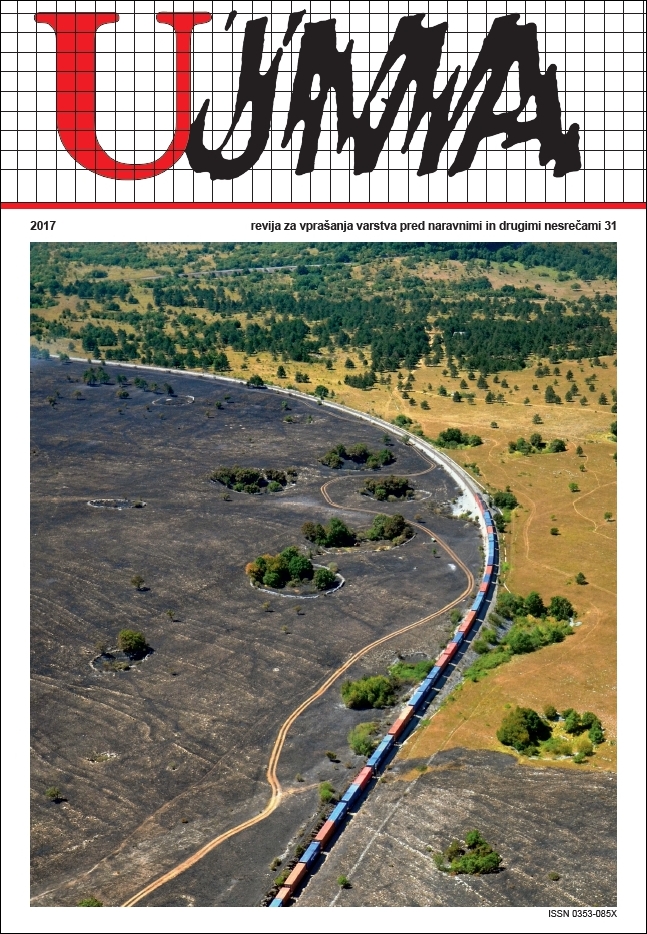INTERNATIONAL SUMMER SCHOOL FOR DOCTORAL STUDENTS WITHIN THE FRAMEWORK OF THE ERASMUS+ ENVIRONMENTAL PROTECTION AND NATURAL DISASTERS PROJECT
Abstract
A consortium of the University of Ljubljana, the University of Brescia (Italy), the University of Natural Resources and Life Sciences BOKU Vienna (Austria), and the company Piktorama has successfully implemented the first international summer school for doctoral students in Ljubljana within the framework of the Erasmus+ “Environmental protection and natural disasters” project. The summer school was implemented using the method of blended learning, and was conducted as distance learning through multimedia support in the first week, between 27 June and 3 July 2016, and as classic teaching in the following two weeks in Ljubljana, between 4 July and 17 July 2016. Twenty participants from seven different European countries and as many different universities attended the summer school.
References
Avsec, S., 2009. »Blended learning« kot uspešna oblika odprtih učnih sistemov pri obravnavi okoljskih vsebin ravnanja z odpadki. V: Orel, M. (ur.). Mednarodna konferenca Splet izobraževanja in raziskovanja z IKT - SIRIKT 2009, Kranjska Gora, Arnes, 263–270.
Benbunan-Fich, R., in Hiltz, S. R., 1999. Impacts of asynchronous learning networks on individual and group problem solving: A field experiment. J. Group Decision and Negotiations, 8(5): 409–426.
Brilly, M., Nilay, D., 2015. Program magistrskega študija za obvladovanje poplav. Ujma, 29: 383–384.
Goodison, T., 2003. Integrating ICT in the classroom: a case study of two contrasting lessons. British Journal of Educational Technology, 34: 549–566.
Graham, C. R., 2006. Blended learning systems: Definition, current trends, and future directions. V: C. J. Bonk & C. R. Graham (Eds.), The handbook of blended learning: Global perspectives, local designs. San Francisco: JosseyBass/Pfeiffer, 3–21.
Haytko, D. L., 2001. Traditional versus hybrid course delivery systems: A case study of undergraduate marketing planning courses. Marketing Education Review, 11(3): 27–39.
Kozma, R. in Anderson, R., 2002. Qualitative case studies of innovative pedagogical practices using ICT. Journal of Computer Assisted Learning, 18, 4: 387–394.
Mikulecky, L., 1998. Diversity, discussion, and participation: Comparing Web-based and campus-based adolescent literature classes. Journal of Adolescent and Adult Literacy, 42(2): 84–97.
Poje Jovičić, N., 2014. QuestCity – Z igro do znanja. Ujma, 28, 293–294.
Reay, J., 2001. Blended learning – a fusion for the future. Knowledge Management Review, 4(3): 6.
Rooney, J. E., 2003. Blending learning opportunities to enhance educational programming and meetings. Association Management, 55(5): 26–32.
Sarkar, S., 2012. The Role of Information and Communication Technology (ICT) in Higher Education for the 21st Century. The Science Probe. 1: 30–40.
Šraj, M., Brilly, M., 2012. E-clasrooms at Hydrology courses. V: Urban Drainage Modelling : proceedings of the Ninth International Conference on Urban Drainage Modelling, Belgrade, 4.–6. september 2012. Belgrade: Faculty of Civil Engineering, 1–8.
Thi Thai, N. T., De Wever, B., Valcke, M., 2017. The impact of a flipped classroom design on learning performance in higher education: Looking for the best »blend« of lectures and guiding questions with feedback. Computers & Education, 107: 113–126.
Wei, P., H.-C. in C.-Y. Huang, 2013. Blended lesrning design and teaching strategies: Case of the program planning course. In Transculture blended learning and teaching in postsecondary education, (ur.) E. J. Francois. United States of America: IGI Global, 110–126.
Downloads
Published
Issue
Section
License

This work is licensed under a Creative Commons Attribution-NonCommercial-NoDerivatives 4.0 International License.
The articles are made available to the public under Creative Commons Attribution-NonCommercial-NoDerivatives 4.0 International (CC BY-NC-ND 4.0).


